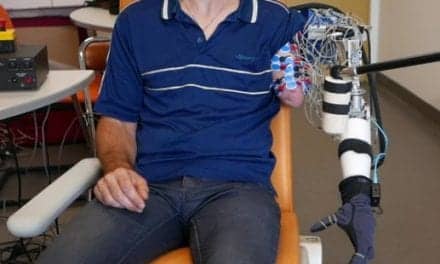Researchers have reportedly identified a difference in the brains of men and women with multiple sclerosis (MS) that may help reveal why the disease is seen more in women than men, according to a study from the Washington University School of Medicine. It is reported in a Washington University in St. Louis news release that recent years have seen a rapid increase in MS diagnoses among women, who get the disorder nearly four times more than men.
By studying mice and people, the release notes that researchers found females susceptible to MS produce higher levels of a blood vessel receptor protein, S1PR2, than males and that the protein is present at even higher levels in the brain areas that MS typically damages.
Robyn Klein, MD, PhD, explains that the team’s genetic studies led them to the receptor, and “When we looked at its function in mice, we found that it can determine whether immune cells cross blood vessels into the brain. These cells cause the inflammation that leads to MS.”
Currently, an investigational MS drug in clinical trials works to block other receptors of the same protein family, the release says, however it does not impact S1PR2. To combat this, Klein suggests that researchers work to develop a drug that disables S1PR2.
In the new research, Klein reportedly studied a mouse model of MS in which the females contract the disease more often than the males. The release states that scientists compared levels of gene activity in the regions of the female brain that MS damages and in other regions the disorder typically does not harm.
The researchers identified 20 genes that were active at different levels in vulnerable female brain regions. According to the release, scientists do not know what 16 of the genes do. Among the remaining genes, the increased activity of S1PR2 was readily observed, as researchers knew from prior studies that the protein regulates how easy it is for cells and molecules to pass through the walls of blood vessels. The release reports that additional experiments suggested S1PR2 opens up the blood-brain barrier.
Once researchers tested brain tissue samples from 20 patients post-mortem, they observed more S1PR2 in MS patients’ brains than in individuals without the disorder, as stated in the release. The results suggest brain tissue from females had higher levels of S1PR2 than male brain tissue. The highest levels of S1PR2 were found in the brains of two female patients who had relapsing and remitting MS.
In order to monitor S1PR2 levels in the brains of living patients, Klein is collaborating with chemists to design a tracer, which she says she hopes will lead to a fuller understanding of how S1PR2 contributes to MS.
Source: Washington University in St. Louis
Newly ID'd Difference in Brains of MS Patients Helps Shed Light on Prevalence in Women





